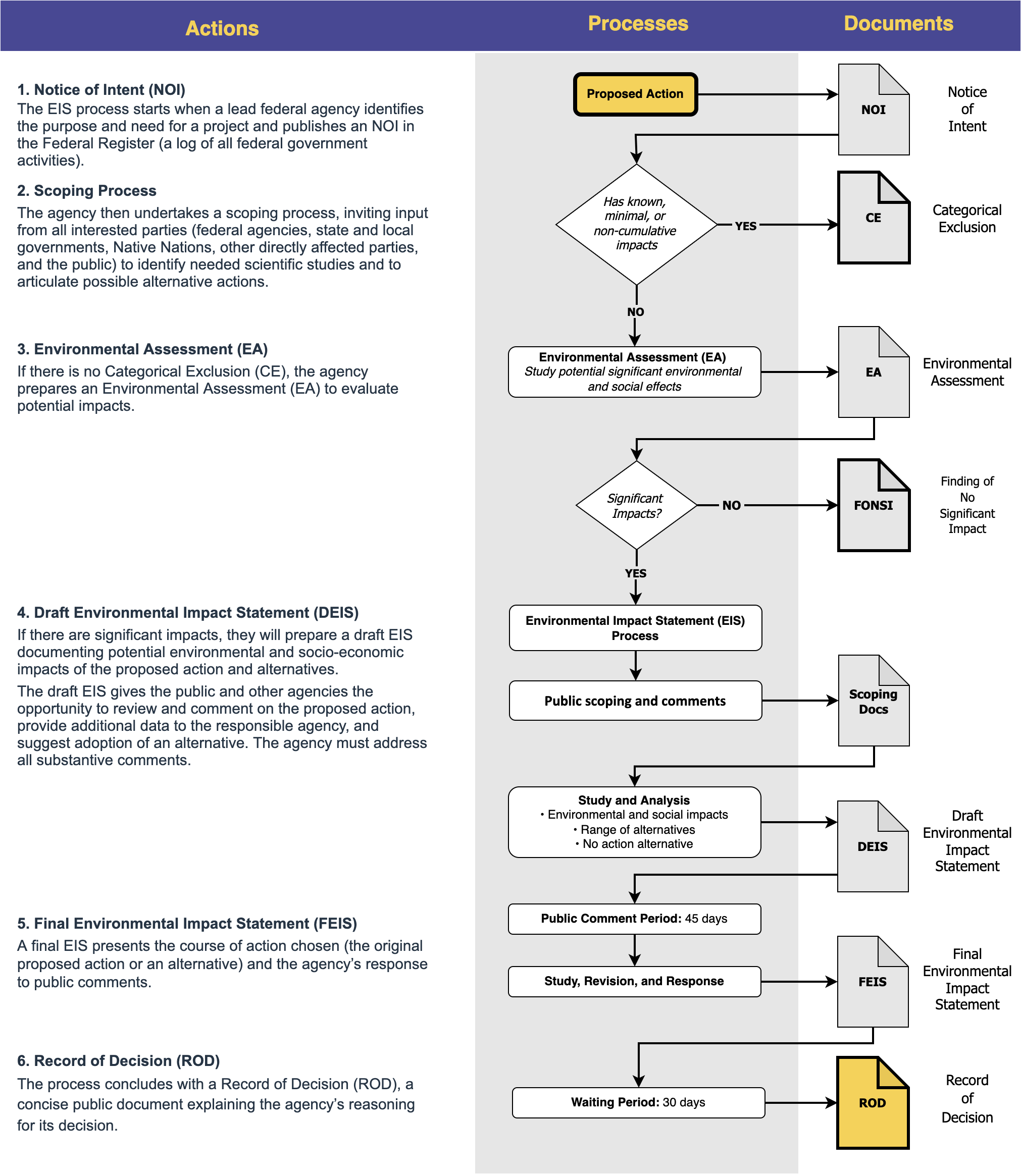About NEPA, the National Environmental Policy Act of 1969
Table of Contents
What is NEPA?
IN 1969, A RADICAL AND VISIONARY LAW was passed by the US Congress establishing the first national environmental policy. At that time, the country’s growing population of 205 million people and post-WWII economic recovery was facing the devastating consequences of virtually unregulated industrial development and pollutants. Rachel Carson’s 1962 book Silent Spring had outed DDT as a disaster for birds. The Cuyahoga River had burned. The Santa Barbara coast had been smothered in spilt oil.
The National Environmental Policy Act (NEPA) created a new approach to environmental governance that brought science and the public into federal decision-making. The vision of NEPA was elegant—that using science leads to better environmental and social outcomes, and better decisions arise from a participatory give-and-take between government and citizens.
Today’s 330 million US citizens face even more complex environmental challenges. Now NEPA must address a changing climate, ever more destructive wildfires, rising sea levels, demographic change, and substandard infrastructure. NEPA’s role in promoting harmony between nature and people has never been more important.
NEPA also established the President’s Council on Environmental Quality (CEQ) and charged it with developing regulations and guidance to federal agencies for carrying out NEPA. CEQ provided different levels of NEPA review to account for different levels of project complexity and controversy, described below.
Federal agencies also issue agency-specific guidance that leads to some variation across NEPA reviews. Many states and tribes have specific environmental review laws that work in tandem with NEPA.
From section 101 of NEPA
Purpose:
• to foster and promote the general welfare
• to create and maintain conditions under which man and nature can exist in productive harmony, and
• fulfill the social, economic, and other requirements of present and future generations of Americans.

President Nixon signing NEPA into law,
January 1, 1970.

President Nixon signing NEPA into law,
January 1, 1970.
The three levels of analysis under NEPA
The heart of NEPA is the requirement for environmental review of potential impacts of a proposed federal action. Environmental review under NEPA can involve three different levels of analysis:
1. Environmental Impact Statement (EIS)
The EIS is the most rigorous NEPA review process reserved for those actions where significant impacts are most likely.
EISs include a detailed, scientific analysis of the expected impacts of proposed federal plans, projects, and activities, a critical review and analysis of possible alternative actions, and ongoing opportunities for public comment and participation.
An EIS provides a systematic process to analyze the expected direct, indirect, and cumulative impacts of a proposed federal action on the environment and on human well-being.
2. Environmental Assessment (EA)
EA reviews, now far more numerous than EISs, provide for a careful review and consideration of alternative actions.
3. Categorical Exclusion (CatEx)
Federal agencies conduct EAs to determine the potential for significant impacts of proposed projects and the need for completing a full EIS.
Over many decades of experience with NEPA, agencies have identified categories of projects that have known, minimal, or non-cumulative impacts and can forego an extensive individual analysis. These determinations are called Categorical Exclusions or CEs.
How many environmental impact statements are there?
Since 1970, over 40,000 EISs have analyzed the impacts of federal projects such as:
- construction of transportation infrastructure
- permit approvals for oil, gas, and mineral extraction
- management of public lands
- proposed regulations
Taken together, these EISs provide a vast store of varied data about effects on:
- hydrology
- ecology
- society and the economy
- culture
- public health
Infographic: The NEPA review process




